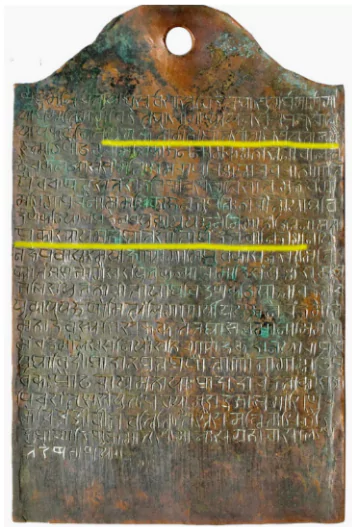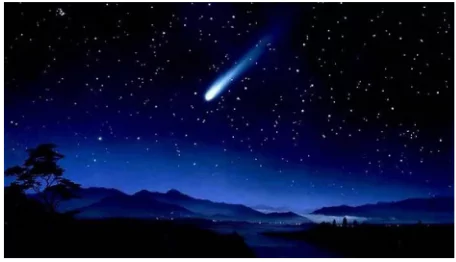A 15th-century copper plate inscription discovered at the Mallikarjunaswamy Temple in Srisailam, Andhra Pradesh, has revealed the first known Indian epigraphical reference to Halley’s Comet.
- The inscription aligns with the 1456 CE appearance of Halley’s Comet, a phenomenon historically recorded across many civilizations.
About the Inscription

- Date & Dynasty: The inscription is dated to Śaka 1378, Dhātru Āshāḍha ba. 11, corresponding to Monday, June 28, 1456 CE, during the rule of Vijayanagar king Mallikarjuna.
- Script & Language: It is written in Sanskrit, using the Nagari script.
- Purpose of Grant: The copper plate records a land grant to a Vedic scholar, made specifically:
“To mitigate the great calamity believed to arise due to the appearance of a comet (dhūmakētu mahōtpāta śāntyartham) and the associated meteor shower (Prakāśyāya mahōtpāta śāntyartham).”
- Recipient of Grant: The agrahāra (tax-free village) named Simgapura in Kelajhasima of Hastinavati Vemṭhe was granted to Limgaṇarya, a Brahmin and Vedic scholar from Kaḍiyalapura (believed to be modern Kaḍiyapulanka in Kadapa district).
- Cultural Belief: The inscription reflects the traditional view that comets and meteor showers were inauspicious omens, often seen as harbingers of calamity.
- The phrase: “Prakāśyāya mahōtpāta śāntyartham dattavān vibhuḥ” reinforces the idea that the grant was made to pacify the possible disastrous effects associated with the comet.
Significance of the Discovery
- First epigraphical evidence from India directly referring to Halley’s Comet.
- Strengthens the understanding that astronomical phenomena were carefully recorded and interpreted in medieval Indian society.
- Reflects how celestial events influenced royal decisions and religious grants in traditional Indian polity.
- Opens up new avenues for interdisciplinary studies involving epigraphy, history of science, and cultural astronomy.
About Halley’s Comet

- Halley’s Comet is a periodic comet that appears approximately every 76 years.
- It is named after Edmond Halley, who correctly predicted its return using Newton’s laws of motion in the 18th century.
- The 1456 CE apparition was widely observed and feared across Europe, the Middle East, and Asia, including the Ottoman Empire and now, as shown, India.
- Historically, comets were interpreted as omens of political or social upheaval.
- The appearance in 1456 coincided with significant global events, including the Siege of Belgrade and upheavals within regional kingdoms.
About Mallikarjunaswamy Temple, Srisailam
- Located in Srisailam, Nandyal district, Andhra Pradesh, on the banks of the Krishna River.
- One of the twelve Jyotirlinga temples dedicated to Lord Shiva, and also one of the eighteen Maha Shakti Peethas.
- Known as Sri Bhramaramba Mallikarjuna Temple, it is dedicated to Lord Mallikarjuna (Shiva) and Goddess Bhramaramba (Parvati).
- The temple has ancient origins, with inscriptions and patronage from dynasties like the Chalukyas, Kakatiyas, and Vijayanagara Empire.
- An important pilgrimage site, especially in Shaivism and Shaktism, and historically associated with Sankara Bhagavatpada’s visit.
- The temple maintains a rich collection of epigraphs and copper plate charters, which are being studied and digitized for publication.
- Architectural Style: The temple exhibits the Dravidian architectural style, characterized by pyramidal towers (vimanas), mandapas (pillared halls), and intricate sculptural details.
![]() 21 Jun 2025
21 Jun 2025



